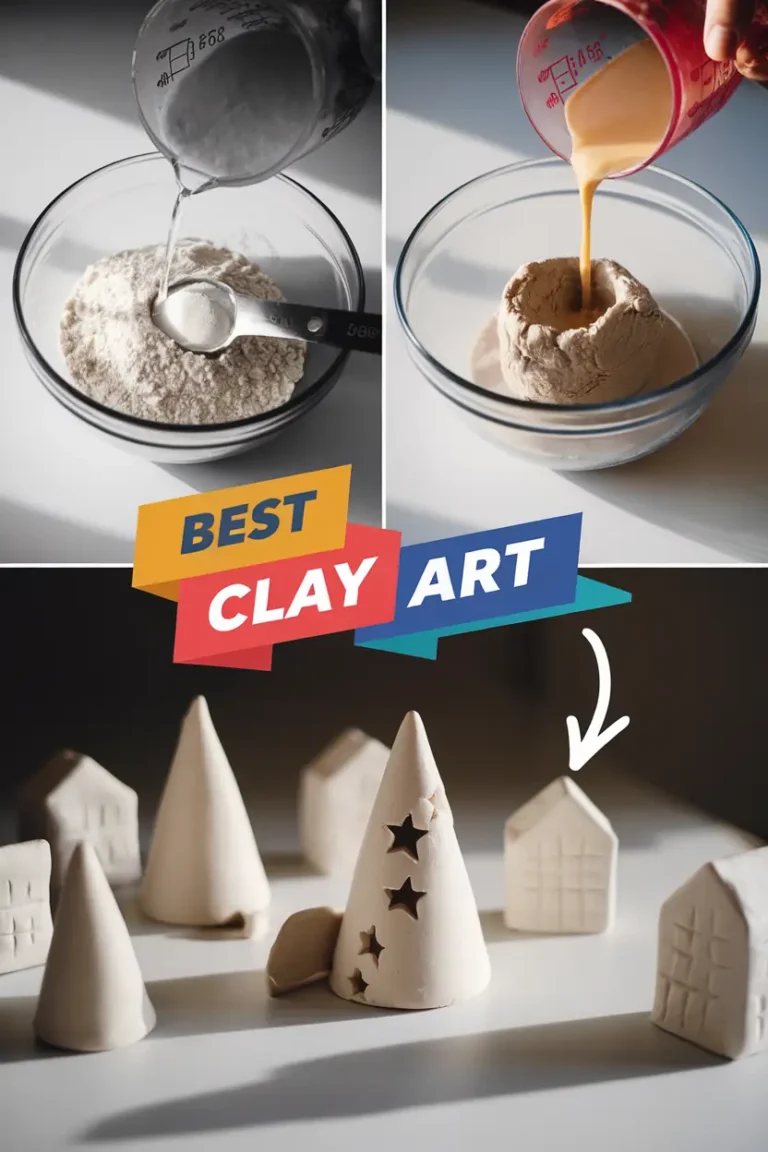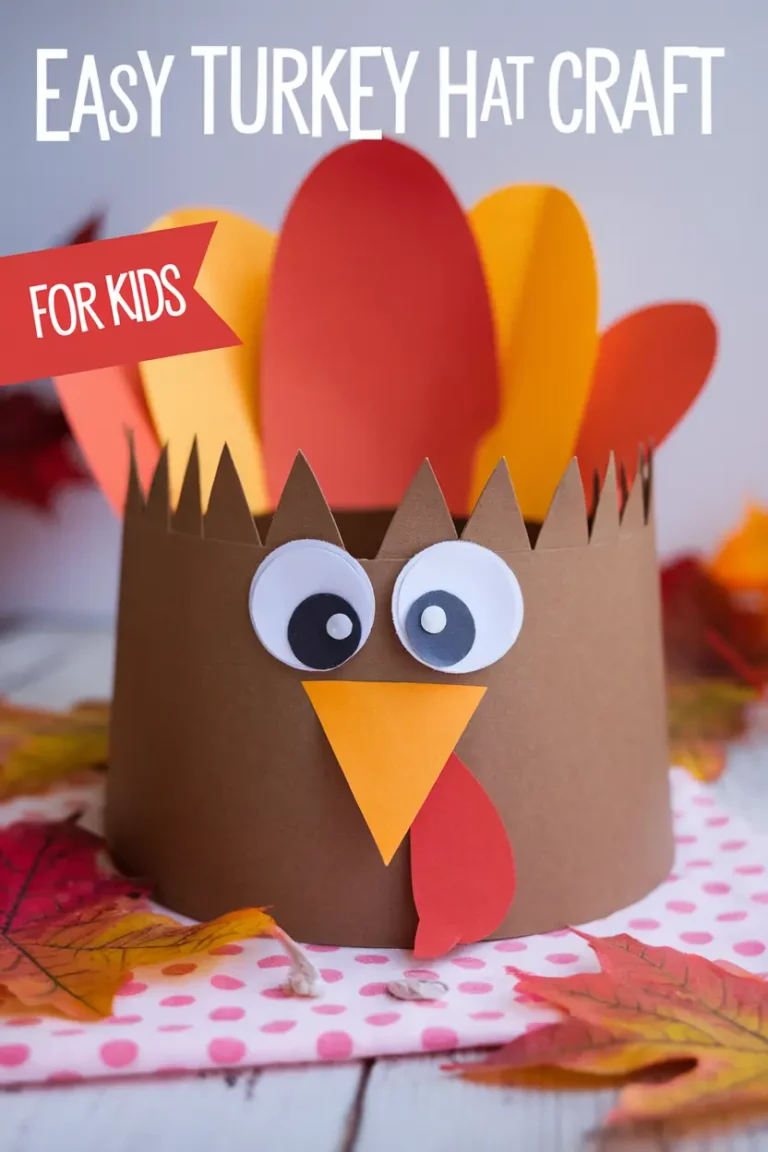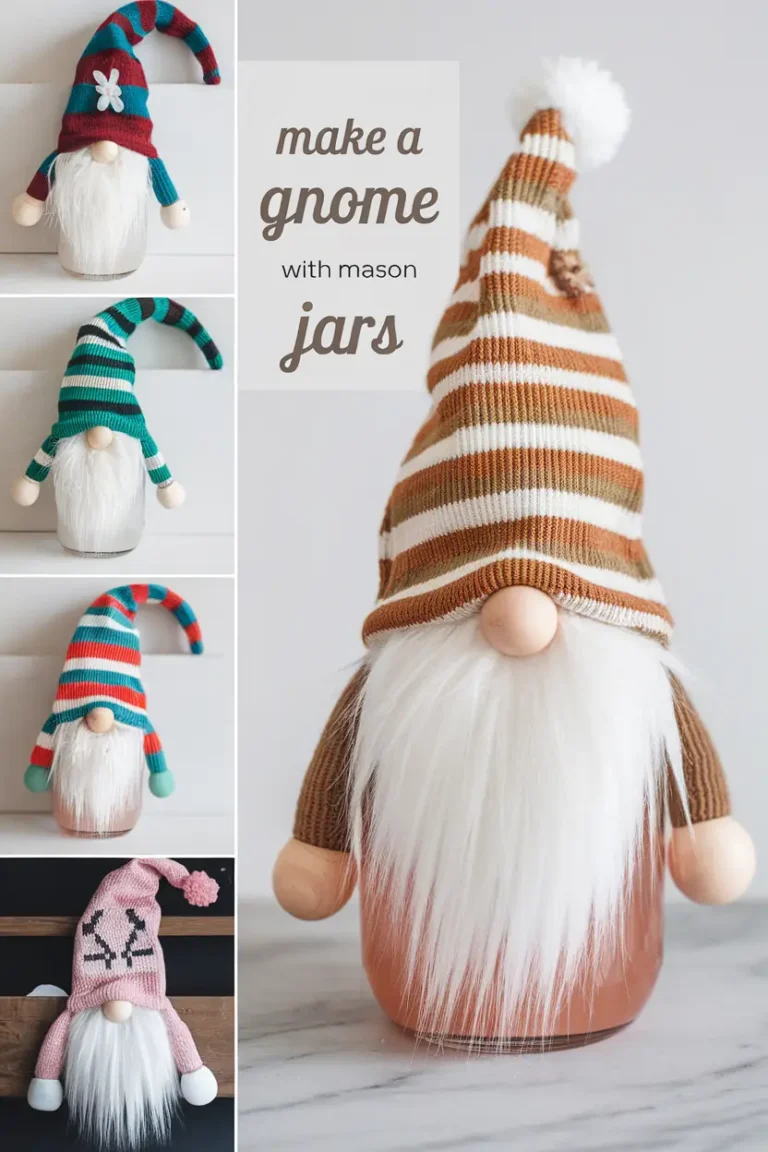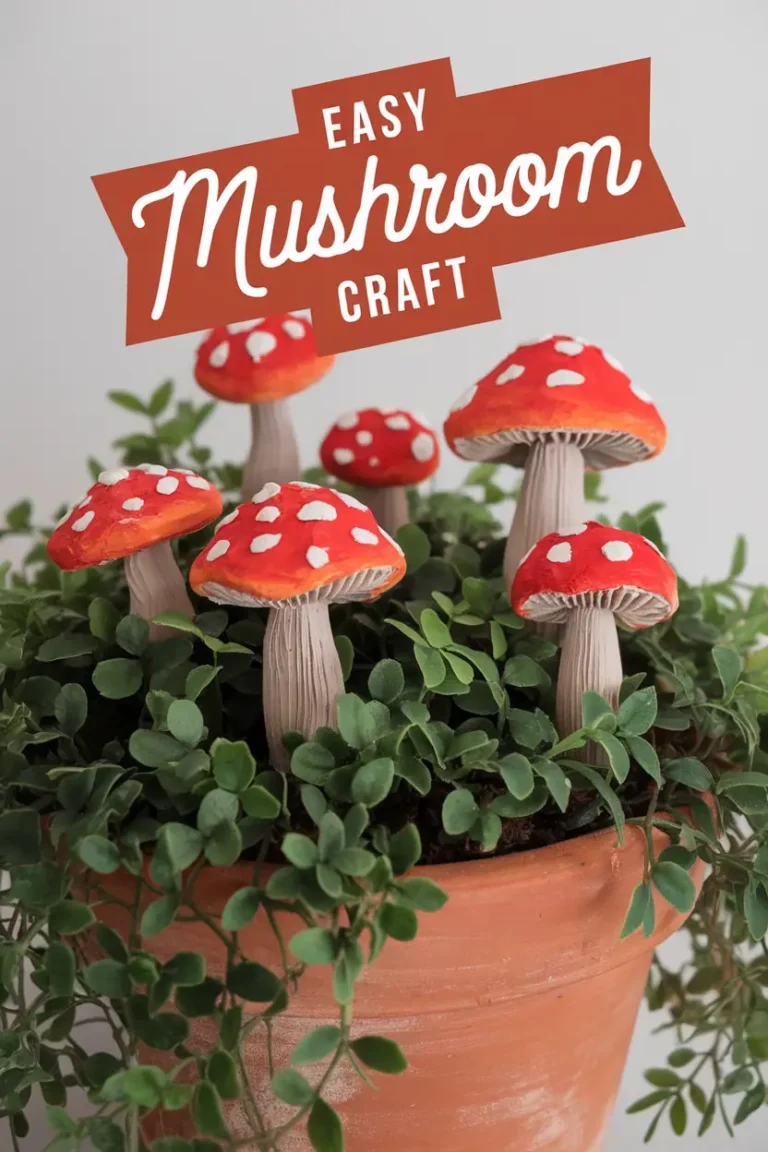If you love crafting and have a soft spot for DIY projects, you’re in for a treat!
Clay crafts are an amazing way to create personalized items without needing fancy equipment.
From air dry clay projects that don’t require an oven to unique clay ornament recipes for every season, there’s something here for everyone. Plus, making your own homemade clay means you get to customize each piece exactly the way you want.
Why You’ll Love This Article:
- Easy-to-Follow Recipes: Try making your own clay with common ingredients.
- Beautiful Decor and Gifts: Craft handmade pieces that make great gifts.
- No Kiln Needed: Discover projects that can be done with DIY air dry clay.
- Learn New Techniques: Tips on how to paint Sculpey clay, mold shapes, and more.
Getting Started with Clay Crafts
Clay Crafts Basics: Choosing Between Air Dry Clay and Oven Bake Clay
When starting with clay crafts, the first big choice is air dry clay versus oven bake clay. Air dry clay is easy for beginners because it dries on its own, no oven needed.
It’s ideal for projects you don’t plan to use with water since it remains porous. Oven bake clay, like polymer clay, hardens in the oven and becomes more durable. This type is perfect if you want to make sturdy items like jewelry or small home decor that lasts.
Essential Tools and Materials for Easy Clay Crafts
You don’t need a lot to get started, but a few basic tools make all the difference:
- Clay: Choose air dry or oven bake depending on your project.
- Rolling Pin: To flatten clay evenly. If you don’t have one, a smooth glass bottle can work!
- Clay Cutters: Shapes like circles, stars, or hearts help you create consistent designs.
- Sculpting Tools: Even toothpicks or butter knives can help with shaping and adding details.
- Paints & Sealants: Acrylic paints are great for color, and a sealant helps protect finished pieces, especially if they’ll be handled or displayed.
Tips for Working with Clay: From Kneading to Shaping
Start by kneading the clay to make it soft and pliable, which makes shaping easier. Always keep a bit of water handy for air-dry clay—adding a few drops keeps it moist as you work.
For shaping, work with small amounts at a time if you’re making detailed items, and don’t forget to smooth out any rough edges with your fingers or a sponge. If you’re using cookie cutters or stamps, press gently and lift to avoid pulling and distorting the clay.
Materials Needed for Clay Crafts
- Air-Dry Clay (white or colored)
- Clay tools: sculpting tools, rolling pin, and carving tools (or use household items like toothpicks and butter knives)
- Acrylic Paints (white, blue, green, red, etc.)
- Paint Brushes of varying sizes
- Craft Sealant or Varnish for added durability
- Cookie Cutters (optional for hearts and other shapes)
- A small bowl (for shaping clay bowls)
- Small candles or battery-operated tea lights (for luminaries)
Step-by-Step Instructions for Creating Each Item
1. Cone Trees with Star Cutouts
- Materials Needed: Air-dry clay, rolling pin, craft knife, small star cookie cutters, plastic or parchment sheet, a smooth surface, paint, and sealant.
- Process:
- Rolling Out the Clay: Place a plastic sheet on your work surface to prevent sticking. Roll out the clay into a thin, even sheet about 1/4 inch thick.
- Shaping the Cone: Use a circular or rectangular template to cut out a semicircle from the clay. A thin edge will help you form a cone without gaps or overlaps.
- Adding Star Cutouts: Press small star cookie cutters gently into the clay while it’s flat, carefully removing each star to leave clean holes. These will let light through if you decide to place a candle inside the cone.
- Forming the Cone: Slowly lift the clay sheet and roll it into a cone shape. Use a small amount of water to blend and seal the edges together—press them gently until you don’t see any seam.
- Drying: Let the cone dry for at least 24-48 hours in a cool, dry place. Flip it every few hours to ensure even drying.
- Painting & Sealing: Once dry, paint the cone in your desired color and add a clear, glossy sealant for durability and a smooth finish.
Pro Tips:
- If the cone struggles to hold its shape, consider supporting it with a small cup or cardboard cone until partially dry. Once the structure is firm, remove the support for full drying.
2. Mini Clay Houses with Window Cutouts
- Materials Needed: Air-dry clay, small knife or craft blade, rolling pin, toothpicks, paint, and sealant.
- Process:
- Creating Walls and Roof: Roll out clay to about 1/4 inch thickness, ensuring an even layer to prevent cracking. Use a template or ruler to cut out four equal-sized walls. Cut out windows and doors carefully using a toothpick or blade.
- Assembling the House: Use a bit of water along the edges to attach the walls together. Press firmly but gently and smooth any seams by running your fingers along the joints. Leave an open roof for a modern, minimalist look, or create a small slanted roof and attach it similarly.
- Drying: Set the house on a flat surface and let it dry completely for 24-48 hours. Once it feels dry and firm, proceed to painting.
- Decorating & Sealing: Add paint to highlight windows, doors, or details around the house edges. A clear sealant will add shine and protect your work.
Pro Tips:
- When making windows, go slow to avoid warping the clay. A toothpick or small needle can create fine lines for window panes or other small details.
3. Hearts and Ornaments
- Materials Needed: Air-dry clay, rolling pin, heart-shaped cookie cutters (or freehand shaping), toothpick for holes, paint, string or ribbon.
- Process:
- Shaping Hearts: Roll out the clay to about 1/4 inch thickness. Use a heart-shaped cookie cutter to cut out perfect heart shapes. If you’re shaping by hand, start with a small ball of clay and press it into a heart form, smoothing edges with your fingers.
- Adding Holes for Hanging: If you want the hearts to hang, use a toothpick to carefully make a hole at the top. Ensure the hole is large enough for stringing but not too close to the edge where it might weaken.
- Drying, Painting & Sealing: Let the hearts dry fully, which may take 24-36 hours. Paint them in soft pastel colors or holiday hues, then seal for a polished look.
Pro Tips:
- Be sure to keep holes at least 1/8 inch from the edge to prevent breakage. For smoother hanging holes, twist the toothpick gently as you make the hole, which will smooth the clay around it.
4. Birds and Animal Figures
- Materials Needed: Air-dry clay, a small sculpting tool or knife, water for smoothing, paint.
- Process:
- Creating the Bird Body: Start with a small ball of clay. Roll it into an oval and gently pinch one end to form the bird’s tail. Use your fingers to shape the head by pinching a small section upward.
- Adding Details: Use a toothpick or a small tool to create the wings by pressing or drawing gentle lines. You can also add a beak by pinching a tiny section at the front.
- Drying & Painting: Allow the bird to dry completely, then paint with soft or bright colors as desired. Add a bit of orange for the beak or black dots for eyes to bring the bird to life.
5. Forming the Clay Bowls
- Step 1: Roll out the clay into a circle about 1/4-inch thick.
- Step 2: Press the clay circle gently over the outside of a small bowl to shape it, trimming excess clay around the edge if needed.
- Step 3: Let it dry in place. Once dry, remove it carefully from the bowl.
- Step 4: Paint and seal the bowl for extra durability. Decorate with designs, quotes, or patterns for a personalized touch.
Estimated Time Required for Each Project
- Cone Trees: About 1-2 hours of hands-on time (not including drying time)
- Clay Houses: Around 2 hours for cutting, shaping, and assembling
- Hearts and Ornaments: 30 minutes to 1 hour, depending on the quantity
- Birds and Animal Figures: 1 hour per figure, especially for smaller details
- For Clay Bowls: 2 hours maximum for making the clay bowls, about 2-3 days, including all drying periods.
Confirmation and Minor Adjustments
- Cone Trees: Just a quick note: make sure the clay is not too thin when cutting the semicircle, as it may crack during drying. Around 1/4-inch thickness works well.
- Clay Houses: When assembling the walls, using a little water on your fingers helps seal the edges more effectively. Also, double-check that the windows and doors are smooth around the edges for a cleaner finish once painted.
- Clay Hearts: If you’re planning to use them as hanging ornaments, ensure the hole at the top is big enough for your string or ribbon but not so close to the edge that it might break.
- Clay Birds: One tip: if shaping the bird’s tail and head feels tricky, you can roll small separate clay pieces for the head and tail and then gently attach them to the body.
- Clay Bowls: Make sure the bowl you’re using as a mold has a smooth outer surface, so the clay doesn’t stick or leave unwanted textures. You could also line the bowl with plastic wrap for easy removal after drying.
Additional Tips and Clarifications for All Projects
- Preventing Cracks While Drying: Drying clay can crack if it dries too quickly or if the thickness varies too much. Ensure uniform thickness, and consider covering the pieces loosely with a plastic bag during the first few hours of drying. This helps slow down the drying process and prevents cracks.
- Using the Right Tools: Common household items can double as clay tools—try toothpicks for fine lines, the back of a knife for straight edges, or a fork for creating textures.
- Painting and Sealing: For a professional finish, use acrylic paint in thin layers, allowing each layer to dry before adding the next. Once painted, a water-based sealant will protect your design and add shine.
- Using Acrylic Paints: Acrylics work best on air-dry clay and give a vibrant look. Apply two coats if you want the colors to pop, letting the first coat dry completely before adding the second.
- Avoid Overworking the Clay: If you knead the clay too much, it may dry out or get too soft and sticky. Try to shape your pieces without excessive handling.
- Adding Details: For small details like feathers on birds or stars on trees, use toothpicks, pencils, or any fine-point object. These tools are often easier to control than specialized clay tools and still achieve a detailed finish.
- Handling Breakage: If any piece accidentally breaks while drying, you can use a tiny bit of white glue to reattach it once both pieces are dry. Just apply a small dab and hold the pieces together until secure.
- Avoid Overloading with Water: While water helps, don’t soak the clay; it can become too soft and take longer to dry.
Mistakes to Avoid While Making Clay Crafts
When making clay bowls, cone pines, walled houses, and other decorative pieces, there are a few common mistakes that can affect the final look and durability of your creations. Here’s a breakdown of what to watch out for in each type of craft discussed:
1. Clay Bowls
- Uneven Thickness: Rolling the clay too thin in some areas and thick in others can cause cracking or warping. Aim for a uniform thickness of around 1/4 inch.
- Skipping Mold Support: Not using a mold (such as a small bowl lined with plastic wrap) can lead to an uneven shape as the clay dries. The mold helps keep the structure intact.
- Rushing the Drying Process: Clay bowls are prone to cracking if they dry too quickly. Avoid placing them in direct sunlight or near heat sources. Instead, let them air dry in a cool, shaded place for gradual drying.
- Lack of Smoothing: Rough edges or bumps can make the bowl look unpolished. Use a damp sponge or your fingers to smooth the edges and surface before drying.
2. Clay Cone Pines
- Too Thin or Thick Layers: Thin cones can easily collapse, while thick ones may not dry evenly. Maintain a thickness of around 1/4 inch for stability.
- Incorrect Sealing of Edges: When shaping a cone, make sure to blend and seal the edges well. If not properly sealed, the seam might come apart during drying or handling.
- Uneven Cutouts: If you’re creating star or circle cutouts, press the cutter gently and twist slightly to avoid jagged edges. Uneven cutouts can cause weak points in the cone.
- Not Providing Support While Drying: Cone shapes can easily warp. Use a cardboard cone or a similar support lined with plastic to keep the shape intact while it dries.
3. Walled Clay Houses
- Overhandling Thin Walls: Thin walls can become fragile, so avoid handling them too much after shaping. Keep the wall thickness consistent to prevent weak spots.
- Ignoring Structural Support: While drying, clay houses may sag or crack at the joints. Support the walls with light pressure from small objects or mold forms to help maintain shape.
- Not Using Enough Water for Joint Sealing: When attaching walls or adding the roof, a small amount of water acts as glue. Not enough water can cause seams to come apart.
- Making Windows Too Close to the Edges: Avoid cutting windows or doors too close to the edge of the walls, as this can weaken the structure and cause cracks.
4. Clay Hearts, Ornaments, and Small Items
- Not Making Hanging Holes Large Enough: If you’re creating hanging ornaments, ensure that holes are large enough for stringing but far enough from the edge to prevent breakage.
- Overly Thin Pieces: Ornaments and small items can crack easily if rolled too thin. Try to maintain a minimum thickness of about 1/8 inch for durability.
- Skipping the Smoothing Step: With small items, rough edges are more noticeable. Smoothing the edges with a damp cloth or sponge helps give a finished look.
5. Decorative Figures like Birds, Mushrooms, and Animals
- Unstable Bases: For items like birds or mushrooms, not flattening the base properly can lead to wobbling. Gently press the base against a flat surface to ensure stability before drying.
- Too Much Water During Sculpting: Adding excess water can make clay too soft, causing details to blur or the figure to collapse. Use just enough water to prevent drying cracks and aid shaping.
- Missing Fine Detail Tools: Creating small details with fingers alone can lead to smudging or misshapen features. Use toothpicks or fine tools to add details like eyes, feathers, or texture to keep the design sharp.
Pro Tips for Making Clay Crafts
General Tips for All Clay Projects:
- Prepare Your Workspace: Use a smooth, non-stick surface like a plastic mat or parchment paper to prevent sticking. Keep tools within reach, such as a rolling pin, a small knife, and a damp sponge.
- Moisten Clay Regularly: Air-dry clay tends to dry out quickly, so keep a small bowl of water handy. Use damp fingers to moisten the clay surface as needed.
- Use Household Items for Texture: Everyday items like lace, leaves, or textured fabrics can be pressed into the clay to add unique textures. This works well for bowls, cones, or even small house details.
- Roll Evenly for Uniform Thickness: Use two wooden sticks of equal height on each side of the clay while rolling to maintain a consistent thickness, which is especially useful for flat items like ornaments or plates.
- Support Shapes with Molds: Use small bowls, jars, or even cardboard cones lined with plastic wrap as temporary molds for bowls, houses, and trees. This ensures stability and prevents collapse during drying.
- Experiment with Paint Techniques: Acrylic paints work well for most clay projects. Try a wash (thinned-out paint) for softer colors, or use a sponge for texture. Metallic or pearl acrylics can add a beautiful finish to certain projects like ornaments or jewelry holders.
For Specific Projects:
- Clay Bowls: Use a bowl or jar as a mold to shape your clay bowl. Line it with plastic wrap for easy removal once the clay begins to dry and firm up.
- Cone Trees: To get neat star cutouts, press the cutter in gently and twist slightly before lifting. This helps avoid jagged edges around the star shapes.
- Birds and Small Figures: For finer details, like feathers or facial features, a toothpick or the back of a paintbrush can be useful for carving or adding texture.
- Hanging Ornaments: Don’t forget to make a hole at the top for hanging before the clay dries. A drinking straw or a skewer works well to create smooth, circular holes.
- Clay Jewelry Holders: For ring dishes, gently press the clay into a shallow bowl for a clean, even shape. Add texture around the rim with stamps or textured objects for extra character.
Finishing Tips:
- Sanding After Drying: If you notice any rough patches after drying, lightly sand with fine-grit sandpaper. This is especially useful for bowls and ornaments where smoothness enhances the final look.
- Seal with a Clear Coat: Whether you’re using matte, satin, or glossy finish, a sealant protects the clay from moisture and wear. Apply it evenly and let it dry fully before handling.
- Add Scent to Seasonal Projects: For items like ornaments, mix a small amount of cinnamon or essential oils into the clay. This will give your creations a festive scent, which is especially nice for holiday decor.
- Create a Balanced Display: If you’re making items as a set, vary the sizes and colors slightly to create an eye-catching display. This works well for cone trees, bowls, and other decor pieces that might be grouped together.
- Correct Cracks with Wet Clay: Small cracks can sometimes appear while drying. Fix these by filling them with a bit of damp clay, smoothing it out, and letting it dry again.
- Layer Paint for Depth: For a more professional look, apply paint in layers. Let each layer dry fully before adding the next, especially if you’re creating designs or gradients.
- Store Leftover Clay Properly: If you’re using air-dry clay and have leftovers, keep it in an airtight container or zip-lock bag with a bit of moisture inside to prevent it from drying out.
- Experiment with Colors: Try mixing colors into the clay before shaping for a marbled effect. This can look lovely for items like jewelry holders, ornaments, or bowls.
- Protect the Surface: Lay down a sheet of parchment or wax paper when working with clay. It prevents sticking and makes cleanup easier.
- Adjust Drying Times for Thickness: Thicker projects, like small houses or larger bowls, may need extra drying time. Avoid handling them too soon, as they can still be fragile when partially dried.
Fun and Easy Clay Crafts for Kids
Cute Clay Crafts for Kids: Ideas for Simple Shapes Like Hearts, Stars, and Animals
Clay crafts are perfect for kids, especially with easy shapes like hearts, stars, and simple animals. Kids can use cookie cutters to press out shapes or roll clay into balls and flatten them into discs. These simple projects help little ones develop motor skills and creativity without being too challenging. Once dry, they can paint their creations in bright colors or add glitter for extra fun.
Making it Fun: Clay Crafts Ghosts, Ducks, and Octopuses for Halloween and Everyday Play
For a playful twist, try making clay ghosts, ducks, or octopuses. These are easy and fun—just shape a ball for the ghost body, flatten the base, and add small details for eyes and mouth. For ducks, roll a small body and head, then add a tiny beak and wings. Octopuses can be made by shaping a ball for the head and rolling little legs. These cute creatures are especially fun to display around the house or in kids’ rooms.
Nature-Inspired Clay Crafts: Leaves, Flowers, and Mushrooms to Encourage Creativity
Bring the outdoors in by making nature-inspired crafts. Kids can create simple leaves by flattening clay and using a leaf as a stencil or pressing real leaves to create natural textures. Mushrooms are another easy shape—just form a rounded top and a small base. For flowers, shape petals individually and press them together around a small ball. These crafts are great for connecting with nature and make lovely decorations for kids’ rooms or gifts for family.
Unique Clay Crafts for Home Decor
How to Create Clay Bowls and Plates as Functional Decor
Clay bowls and plates are a beautiful way to add handmade charm to your home decor. To create these, start with a ball of clay and roll it out to your desired thickness, around ¼ inch. Use a bowl or plate as a mold—simply press the clay over it to get the shape. Air dry or bake according to your clay type, and once hardened, paint with colors that suit your decor style. These clay dishes can hold jewelry, keys, or small trinkets, making them both functional and decorative.
Beautiful and Unique Clay Vases and Wall Hangings: Adding Art to Your Space
Clay vases and wall hangings bring an artistic element to any room. For a clay vase, form a tube shape by wrapping clay around a small bottle or cylinder and let it dry. Decorate the outside with patterns or press small shapes into the clay. Wall hangings are simple and elegant; shape clay into small discs, squares, or abstract forms, poke a hole at the top, and string them together. These pieces add a unique, handmade touch to your space and are perfect for displaying in living rooms or bedrooms.
Incorporating Colors: Ideas for Blue, Pink, and Rainbow Clay Crafts to Match Your Style
Clay is versatile and takes on color beautifully. Try blue, pink, or rainbow-colored clay crafts to brighten your decor. Use colored air-dry clay or paint plain clay pieces once they’re hardened. For a rainbow effect, mix different colored clays together to create marbled patterns or layer paints in bright colors. These vibrant pieces can be used as accents around the house, adding personality and a pop of color to any room.
Personal Clay Crafts for Gifts and Accessories
Gifting Ideas: Jewelry Holders, Keychains, and Ring Dishes as Handmade Gifts
Handmade clay gifts like jewelry holders, keychains, and ring dishes make for thoughtful presents. For jewelry holders or ring dishes, shape the clay into small bowls or trays, bake or air-dry, and paint them in favorite colors or patterns. For keychains, roll clay into small shapes (like hearts or stars), poke a hole for the keyring, and personalize with paint. These gifts are simple, practical, and perfect for adding a handmade touch to birthdays or holidays.
Stylish Clay Accessories: Making Necklaces, Bracelets, and Earrings with Clay
Clay jewelry is a stylish and easy way to create one-of-a-kind accessories. Roll clay into beads or small pendants, and make holes for stringing before baking. You can also use molds to create detailed shapes for earrings and necklaces. Paint or glaze the pieces to add shine or color, then attach earring hooks, necklace chains, or bracelet strings to finish. These clay accessories are lightweight, customizable, and add a personal touch to any outfit.
Adding Personal Touches: Using Quotes and Engravings to Make Unique Gifts
Add a meaningful touch to your clay crafts by engraving quotes or names on your pieces. For example, inscribe a favorite saying or the recipient’s name on a clay bowl, keychain, or jewelry dish using a sculpting tool or toothpick before baking or drying. This simple technique adds a heartfelt, unique element, turning each item into a cherished keepsake. It’s perfect for creating personalized gifts that will be treasured for years to come.
Seasonal Clay Crafts for Christmas and Beyond
Festive Clay Crafts for Christmas: Ornaments, Stars, and Holiday Decorations
Bring some holiday cheer into your home with festive clay crafts for Christmas! Create ornaments by rolling out clay and cutting it into shapes like stars, hearts, or trees.
Use cookie cutters to keep the shapes even and make a hole at the top with a straw for hanging. Once dried, paint the ornaments in classic holiday colors or add glitter for a sparkling touch. These handmade ornaments make lovely additions to your tree or thoughtful gifts for friends and family.
Quick Dry Clay Crafts for Last-Minute Gifts or Decorations
If you’re in a rush, quick-dry clay crafts are perfect for last-minute holiday decor or gifts. Make simple designs like small bowls, candle holders, or coasters by molding the clay and letting it dry quickly.
Add a personal touch with paint or engrave initials for a unique twist. These quick crafts are easy to make, don’t require baking, and are ready to use or gift within hours.
Creating Holiday-Themed Clay Projects: Snowmen, Trees, and Gifts
Holiday-themed clay projects like snowmen, Christmas trees, and gift shapes are fun to make and bring the season to life. For a snowman, roll clay into three small balls, stack them, and add tiny details for eyes, nose, and buttons.
Clay Christmas trees can be created by forming cone shapes and decorating them with small clay ornaments or paint. These festive figures look adorable as table decor, tree ornaments, or little holiday keepsakes.
How to Add Color and Texture to Clay Crafts
Using Acrylics and Glazes: Painting and Sealing Clay Crafts for a Polished Look
To give your clay crafts a polished, vibrant look, try using acrylic paints or glazes. Once your clay piece is dry, apply acrylic paint in your chosen colors. Acrylics are perfect because they adhere well to clay and dry quickly.
After painting, seal the piece with a clear glaze or varnish to give it a glossy finish and protect it from scratches. For a smoother look, apply multiple thin coats of paint and finish with a few layers of glaze for a durable, shiny result.
Adding Natural Elements: Ideas for Nature-Inspired Textures in Clay
To add unique texture to your clay creations, try incorporating natural elements like leaves, flowers, or small stones. Pressing leaves or flower petals into soft clay creates an organic imprint that adds dimension to your piece.
You can also press in small stones, shells, or wood pieces for added texture. This approach gives your clay crafts an earthy feel and is ideal for making nature-inspired decor like bowls, ornaments, or wall hangings.
Popular Color Trends: How to Make Blue, Pink, and Rainbow Clay Crafts
Bright colors are trending in clay crafts!
Blue and pink shades add a modern and playful look, while rainbow designs are perfect for adding a splash of color.
Use acrylic paint to apply these colors after your clay has dried. For a rainbow effect, paint stripes or gradients in different colors. Alternatively, you can mix colored clay to get a swirled, marbled look. These color trends bring your crafts to life and are great for creating eye-catching decor or fun, kid-friendly items.
Creative Inspiration: Unique Clay Craft Ideas
Playful Clay Crafts: Duck and Octopus Designs for Kids and Adults
Make crafting fun with adorable clay duck and octopus designs! To create a duck, mold a small ball for the body, a smaller one for the head, and add tiny clay wings and a beak. For an octopus, make a round body and attach eight small “tentacles.” These playful designs are easy to make, and you can paint them in bright colors to add personality. Kids and adults alike will enjoy making and displaying these cute clay animals.
Make Your Own Clay Rainbow for a Fun Pop of Color
Bring a pop of color into your space by creating a clay rainbow! Roll thin ropes of clay in different colors and arrange them in an arch to form a rainbow shape. Once the clay is dry, you can paint additional details or add a glossy finish. This little clay rainbow makes a cheerful decoration for a desk, shelf, or as a gift. Plus, it’s a great beginner project that’s both fun and colorful.
Trendy Clay Mushrooms and Mini Vases for Cute Decor
Clay mushrooms and mini vases are trendy decor items that add a whimsical touch to any room. For mushrooms, mold a small stem and cap, then paint them in red, blue, or pastels with white dots. For mini vases, shape a small cylinder or cone and hollow out the center, making sure to smooth out any edges. These pieces are perfect for decorating a shelf or as accents in a fairy garden. They’re quick to make, customizable, and look charming on display.
Displaying and Preserving Your Clay Crafts
Tips for Displaying Small and Large Clay Creations in Your Home
For small clay creations like mini vases, animals, or jewelry holders, consider placing them on shelves, window sills, or coffee tables where they can be easily admired. Group similar items together for a cohesive look, or mix them with other decor items for a balanced display.
For larger clay pieces like bowls, plates, or wall hangings, find spots where they can be showcased as statement pieces. A decorative clay bowl could be placed as a centerpiece on your dining table, while a unique clay wall hanging could bring texture and character to a blank wall. Make sure your display area is stable and out of high-traffic zones to avoid accidental bumps or breaks.
How to Properly Seal and Store Clay Crafts for Long-Lasting Results
To keep your clay crafts looking fresh and intact, it’s important to seal and store them properly.
Once your clay piece is fully dry, apply a sealant—such as a clear acrylic spray or glaze—to protect it from moisture, dust, and scratches. This is especially important for air-dry clay items, which are more vulnerable to moisture. For pieces you plan to display outdoors or in humid areas, use a waterproof sealant for added protection.
When storing clay crafts, place them in a cool, dry location away from direct sunlight, which can cause colors to fade over time. If you need to store multiple items together, wrap each piece in tissue paper or soft fabric to prevent them from rubbing against each other. For seasonal items, consider storing them in boxes to keep them safe when not in use. With proper sealing and storage, your clay creations can last for years, becoming timeless pieces in your home decor.
Common FAQs About Clay Crafts
- Can I use regular clay for these projects, or do I need air-dry clay?
You can use either air-dry clay or oven-bake clay for most of these projects. Air-dry clay is convenient and doesn’t require baking, but oven-bake clay tends to be more durable and often has a smoother finish. Choose based on your preference and the tools available. - How long does it take for air-dry clay to dry?
Air-dry clay typically takes 24-48 hours to dry, depending on the thickness of your piece. Larger or thicker items may take a bit longer. Be sure to allow enough time for complete drying before painting or sealing. - Can I add color to the clay before shaping it?
Yes! You can mix acrylic paint into the clay before shaping it to add color throughout the piece. However, this works best with lighter-colored clay as the base. Alternatively, you can paint your craft after it has dried for more vibrant results. - What kind of paint should I use on my clay crafts?
Acrylic paint is ideal for most clay projects, as it dries quickly and adheres well. For a glossy finish, consider applying a clear glaze or varnish after painting. - How do I make my clay crafts more durable?
To make your clay items last longer, ensure they’re completely dry, then apply a sealant or glaze. For oven-bake clay, baking at the recommended temperature and sealing afterward can help improve durability. - Can children make clay crafts?
Absolutely! Clay crafts are perfect for kids. Just choose soft, non-toxic clay, and avoid small pieces that could be a choking hazard. Air-dry clay is usually safe and easy for children to handle. - How do I keep my clay from cracking while it dries?
Cracking often happens if the clay dries too quickly. Try covering your clay piece with a slightly damp cloth as it dries, especially in the first few hours. Also, be mindful of using too much water while shaping, as this can cause cracks. - Can I use clay crafts as outdoor decorations?
Yes, but they need to be well-sealed to withstand outdoor conditions. Use a waterproof sealant and place the clay crafts in sheltered areas if possible, to minimize exposure to rain or direct sunlight.
Conclusion: Share Your Creative Clay Creations!
Now that you’ve mastered these ideas and techniques, don’t hesitate to experiment with different colors, textures, and shapes. Let your imagination take over, and feel free to make each piece uniquely yours!
We’d love to see what you create!
Share your clay masterpieces with friends and family or tag us on social media to inspire others.
Whether you’re making gifts or decorating your home, your clay creations are sure to bring warmth and charm.
Don’t forget to save or share this article for future projects. You never know when inspiration will strike for your next clay craft!






